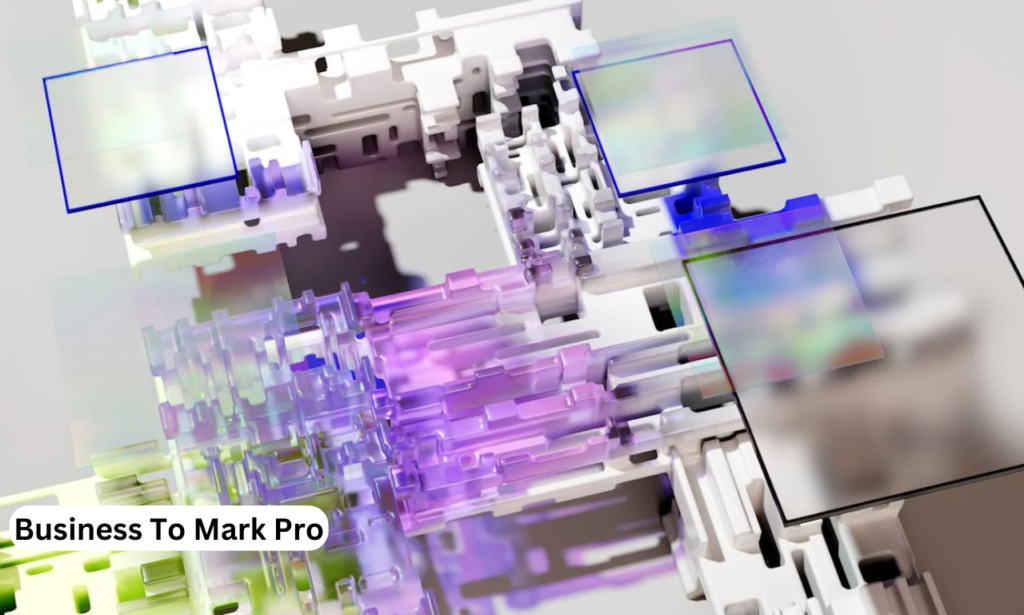Have you ever wondered how today’s most advanced innovations are created? From smartphones to self-driving cars, the backbone of modern-day technology lies in one concept—design. But what if we told you that the next wave of innovation is about to be redefined by Design Technologies Ultra? Curious? Let’s dive into the world of cutting-edge design technologies that are shaping our future and see why this revolution is more exciting than ever.
What is Design Technologies Ultra?
Design Technologies Ultra refers to the integration of advanced tools, methodologies, and frameworks that push the boundaries of creativity and functionality. It’s not just about building a product that works—it’s about creating seamless user experiences, sustainable solutions, and futuristic designs that blend form and function effortlessly. This term encompasses a broad spectrum of design fields, from industrial design and architecture to digital interfaces and artificial intelligence (AI)-powered solutions.
At its core, Design Technologies Ultra is about leveraging ultra-modern technology to solve complex problems with user-centric solutions. It builds on the foundation of traditional design principles but infuses them with the power of automation, machine learning, and big data analysis, allowing creators to develop smarter and more efficient designs.
The Evolution of Design Technologies
Before delving deeper into the specifics of Design Technologies Ultra, it’s essential to understand the evolution of design technologies over the past few decades. Let’s take a trip down memory lane.
- Pre-digital era: Designers relied on manual drafting and prototyping methods, which were time-consuming and prone to human error.
- The digital revolution: The introduction of Computer-Aided Design (CAD) revolutionized the field, enabling designers to work faster, reduce errors, and test their prototypes digitally.
- Automation and AI integration: As technology advanced, AI and machine learning began to shape how design processes are approached. Algorithms could now predict user needs, optimize designs, and provide personalized solutions.
- Design Technologies Ultra: The next phase in design innovation is the fusion of these technologies with a focus on ultra-high precision, sustainability, and enhanced user experience.
With Design Technologies Ultra, the design process becomes a fluid, ever-evolving journey where machines and humans collaborate to create beyond imagination.
Key Pillars of Design Technologies Ultra

1. Artificial Intelligence and Machine Learning
AI and machine learning have transformed the design landscape by offering designers tools that can predict trends, optimize workflows, and even generate designs autonomously. By analyzing large data sets, machine learning algorithms can identify patterns and user preferences that would be impossible to detect manually.
For example, in the fashion industry, AI-powered tools can analyze customer behavior and suggest design elements that are likely to be successful, reducing the guesswork and speeding up the creation process.
2. Generative Design
Generative design is a cutting-edge approach where designers set parameters such as size, materials, weight, and manufacturing methods. Then, algorithms generate thousands of possible designs, each meeting the pre-set conditions. The designer can then choose the best option, or the software itself can optimize the final design based on performance metrics.
This technology has applications in architecture, automotive design, and even consumer electronics, allowing for more efficient use of resources and faster design cycles. It’s the ultimate blend of creativity and computation.
3. Augmented Reality (AR) and Virtual Reality (VR)
AR and VR are crucial in enhancing design visualization. These immersive technologies allow designers and stakeholders to experience a product in a 3D environment before it’s ever physically produced.
For instance, an architect can walk through a virtual model of a building, making changes in real-time, or a user can try out virtual furniture in their living room before purchasing. This enhanced visualization improves communication, reduces errors, and leads to better end products.
4. 3D Printing and Additive Manufacturing
While traditional manufacturing is subtractive—cutting away material to create the desired form—3D printing is additive, layering materials to build an object. This approach allows for the creation of complex, custom designs that were previously impossible or too expensive to manufacture.
In industries like healthcare, 3D printing has enabled the production of custom prosthetics and implants tailored to individual patients, significantly improving outcomes and comfort. Meanwhile, in the automotive and aerospace industries, additive manufacturing allows for lighter, stronger parts that reduce fuel consumption and improve performance.
5. Sustainability and Eco-friendly Design
One of the core values of Design Technologies Ultra is sustainability. As environmental concerns grow, designers are increasingly adopting eco-friendly materials and processes. Sustainable design goes beyond the aesthetics—it considers the entire lifecycle of a product, from manufacturing to disposal.
With technologies like biomimicry (design inspired by nature) and circular economy principles, designers are creating products that are not only high-performing but also reduce waste and energy consumption.
6. Human-Centered Design (HCD)
Human-centered design places the user at the heart of the design process. It’s not enough for a product to look good; it must also function in a way that enhances the user’s experience. Design Technologies Ultra takes HCD to the next level by using AI to predict user needs, ergonomics to improve comfort, and behavioral psychology to make interfaces more intuitive.
For example, smartphone interfaces have evolved to be more user-friendly by anticipating touch points based on common behaviors. Apps and websites are optimized for easy navigation, ensuring users find what they need quickly and efficiently.
Real-World Applications of Design Technologies Ultra

1. Automotive Industry
In the automotive sector, Design Technologies Ultra is creating the future of autonomous vehicles. Engineers are using AI-driven design tools to create vehicles that can self-optimize for safety, fuel efficiency, and even driver comfort. Sensors and cameras, powered by machine learning algorithms, are improving car designs to ensure they operate flawlessly in complex environments.
2. Healthcare Innovations
In healthcare, ultra-modern design technologies are revolutionizing prosthetics, medical imaging, and surgical tools. AI-driven models predict how human tissue will interact with various materials, while 3D printing is being used to create custom-fit prosthetics and implants that enhance patient recovery and comfort.
3. Consumer Electronics
Consumer electronics are at the forefront of ultra-design technology. From foldable screens to AI-powered smart home systems, the integration of ultra-modern design principles has allowed for more user-friendly, energy-efficient, and aesthetically pleasing devices. These devices learn from user behavior, adapting to provide a personalized experience.
4. Architecture and Urban Planning
Imagine a city designed to be smart, eco-friendly, and adaptable to climate change. That’s the future of urban planning with Design Technologies Ultra. AI algorithms are being used to model traffic flow, optimize energy use, and even predict the wear and tear on buildings. This allows architects to create cities that are sustainable, safe, and efficient.
Also Read: CF-WR302SV2-V2.4.0.1: The Ultimate Wi-Fi Solution for Dead Zones
The Future of Design Technologies Ultra

The possibilities of Design Technologies Ultra are endless. As machine learning becomes more sophisticated, and as technology continues to evolve, the boundaries between what is possible and impossible in design will blur. Future applications may include AI-designed space habitats, wearable technology that monitors health, and hyper-efficient transportation systems.
Moreover, advancements in quantum computing could open new doors in solving complex design challenges that are currently beyond the capabilities of even the most powerful supercomputers.
Final Thoughts: Designing the Future
The world of Design Technologies Ultra represents an exciting frontier in innovation. From improving sustainability in product development to revolutionizing industries such as healthcare, architecture, and consumer electronics, the potential for these technologies is boundless. As we stand on the brink of this new era, one thing is clear: the future of design will not just be ultra-modern—it will be ultra-personal, ultra-sustainable, and ultra-transformative.
So, the next time you marvel at a sleek new gadget or the intricate architecture of a skyscraper, remember that behind the scenes, Design Technologies Ultra is working its magic, shaping the future of how we live, work, and interact with the world.
FAQs
1. What is Design Technologies Ultra?
It refers to the integration of advanced tools, methodologies, and technologies aimed at revolutionizing the design process. It combines artificial intelligence, machine learning, and generative design to create smarter, more efficient products and solutions. The focus is on enhancing user experience, sustainability, and innovation in fields such as architecture, consumer electronics, and healthcare.
2. How does AI impact Design Technologies Ultra?
Artificial intelligence plays a crucial role in Design Technologies Ultra by analyzing massive datasets, predicting trends, and automating design processes. AI-driven tools can generate design concepts, optimize workflows, and improve product functionality. By using algorithms that learn from user behavior and design metrics, AI makes the design process faster, more accurate, and adaptable to real-world needs.
3. What industries benefit the most from Design Technologies Ultra?
Industries such as automotive, healthcare, architecture, and consumer electronics are at the forefront of using Design Technologies Ultra. In the automotive industry, it powers autonomous vehicle designs, while in healthcare, it enhances prosthetics and surgical tools. Architecture and urban planning benefit from smart city designs, while consumer electronics use ultra-modern technologies for personalized and energy-efficient devices.
4. How does generative design contribute to Design Technologies Ultra?
Generative design is a key feature of Design Technologies Ultra that uses algorithms to explore all possible design solutions based on pre-set conditions. It allows designers to create thousands of iterations and select the best option for efficiency, functionality, and user experience. This technology is valuable in creating optimized designs for industries like aerospace, automotive, and architecture.
5. What role do sustainability and eco-friendly design play in Design Technologies Ultra?
Sustainability is a cornerstone of Design Technologies Ultra, promoting eco-friendly materials, processes, and lifecycle approaches. It encourages designs that minimize waste, energy consumption, and environmental impact. From using biodegradable materials to designing products with longer lifecycles, sustainable design helps balance innovation with environmental responsibility, especially in sectors like manufacturing and urban planning.
6. How are AR and VR used in Design Technologies Ultra?
Augmented Reality (AR) and Virtual Reality (VR) are integral to Design Technologies Ultra, allowing designers to visualize and interact with their creations in a 3D environment. Architects can walk through virtual buildings, and users can try out virtual products. These immersive technologies enhance the design review process, reduce errors, and make collaboration between stakeholders more efficient.
7. How does 3D printing align with Design Technologies Ultra?
3D printing, or additive manufacturing, is a revolutionary part of Design Technologies Ultra. Unlike traditional subtractive manufacturing, 3D printing builds objects layer by layer, enabling the creation of complex, customized designs. It’s widely used in industries like healthcare, automotive, and aerospace to produce lighter, stronger, and more efficient components with less waste and lower costs.
8. What is human-centered design in the context of Design Technologies Ultra?
Human-centered design (HCD) in Design Technologies Ultra emphasizes designing products with the end-user in mind. It focuses on ergonomics, usability, and intuitive interfaces, ensuring the product enhances the user’s experience. Advanced technologies, like AI and behavioral psychology, are used to predict user needs and create products that are not only functional but also highly user-friendly and personalized.
9. What is the future potential of Design Technologies Ultra?
The future of Design Technologies Ultra is filled with possibilities, including AI-designed space habitats, hyper-efficient transportation systems, and wearable health-monitoring technologies. As machine learning, quantum computing, and sustainable practices evolve, this technology will further blur the lines between imagination and reality, delivering designs that are ultra-personalized, eco-conscious, and transformative across industries.
10. How does Design Technologies Ultra enhance product development?
It enhances product development by combining AI, machine learning, and data analytics to optimize design processes. It reduces time-to-market by automating design iterations, allows for smarter material usage through generative design, and improves product performance. This approach ensures that products are not only innovative but also aligned with user needs, sustainability goals, and market trends.
